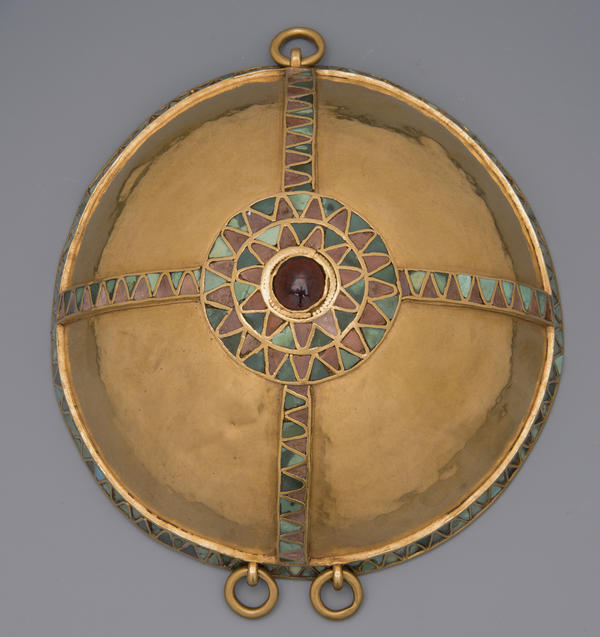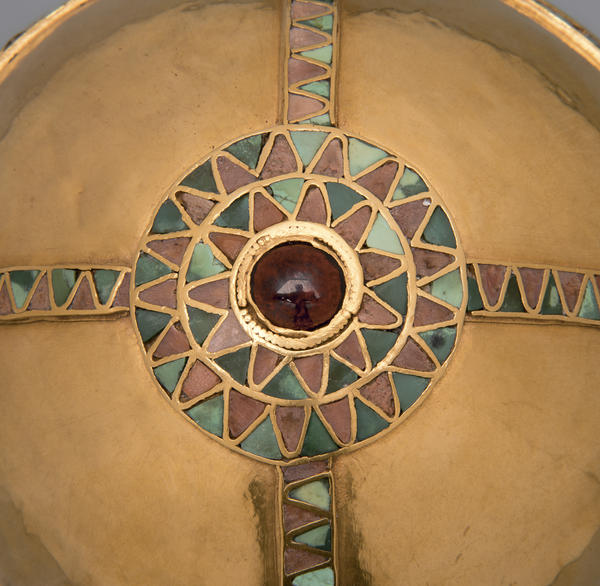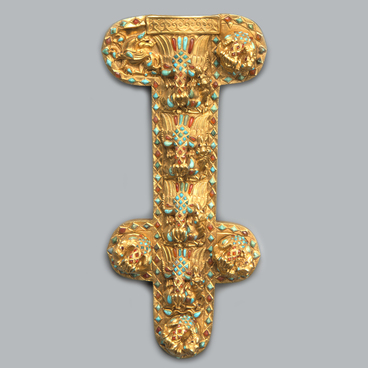This phalera is an element of a horse harness, used to fixate and apportion leather belts. Similar metallic plates originally appeared on the helms and armor of warriors, and they later appeared on harnesses. Noble Sarmatians used phaleras to decorate their harnesses, which demonstrated the owner’s nobility and wealth.
This massive golden pectoral phalera is from the collection of the Azov Historical-Archaeological and Paleontological Museum-Reserve. It was discovered by archeologists in 1986 during their excavations of the Dachi burial, located at the southeastern edge of the city of Azov. The object is daintily decorated. Its center is decorated by a medallion with a huge almandine gemstone, which is a red-purple form of garnet. The medallion is framed by false granulation, which refers to a cast element imitating a decoration made of small beads. Ancient jewelers sometimes replaced genuine granulation itself with this method, as actual granulation required a lot of time, in-depth work and great diligence from a master.
The medallion is surrounded by two ornamental belts made with the cloisonne incrustation technique, where insertions of flat turquoise and pink coral are fixated on cloisonnes, and brazed on a surface. The same decorative method is applied to the lower edge border of the phalera. Objects decorated with the usage of the cloisonne incrustation technique were rare among the Sarmatians in general, so only a few horse harness details in this technique exist.
This massive golden pectoral phalera is from the collection of the Azov Historical-Archaeological and Paleontological Museum-Reserve. It was discovered by archeologists in 1986 during their excavations of the Dachi burial, located at the southeastern edge of the city of Azov. The object is daintily decorated. Its center is decorated by a medallion with a huge almandine gemstone, which is a red-purple form of garnet. The medallion is framed by false granulation, which refers to a cast element imitating a decoration made of small beads. Ancient jewelers sometimes replaced genuine granulation itself with this method, as actual granulation required a lot of time, in-depth work and great diligence from a master.
The medallion is surrounded by two ornamental belts made with the cloisonne incrustation technique, where insertions of flat turquoise and pink coral are fixated on cloisonnes, and brazed on a surface. The same decorative method is applied to the lower edge border of the phalera. Objects decorated with the usage of the cloisonne incrustation technique were rare among the Sarmatians in general, so only a few horse harness details in this technique exist.




